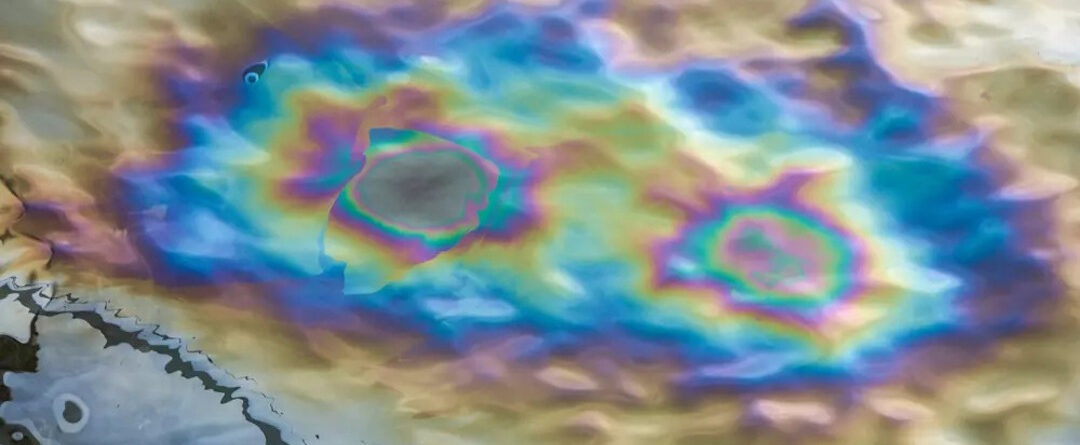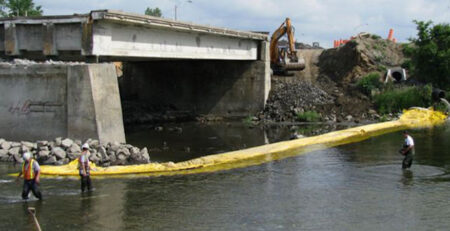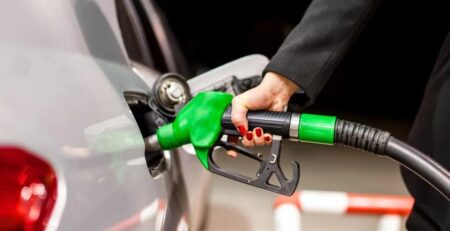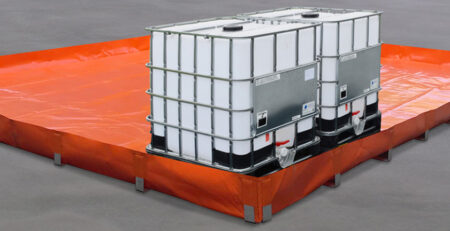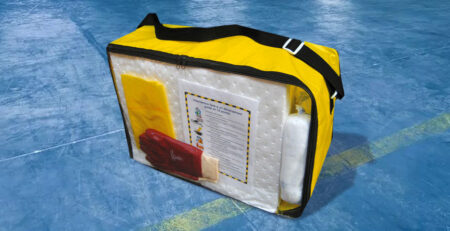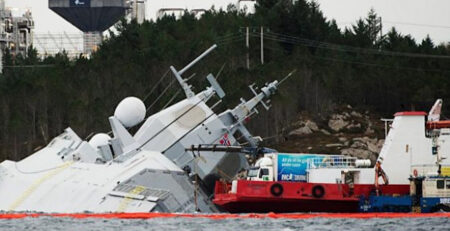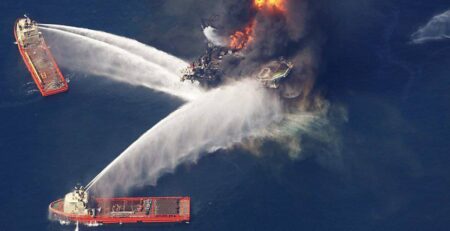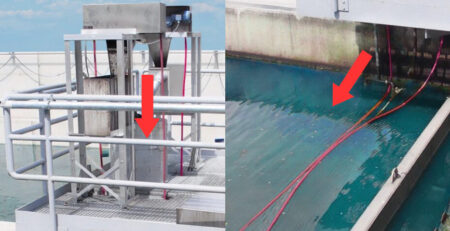Current state of the problem of emergency environmental situations related to oil spills in the Black Sea basin and ways to solve it
Soloviev V.I.
Kozhanova G.A.
Gubanov V.V.
Large-scale oil spills from tanker accidents and damage to oil platforms are among the most frequent and dangerous environmental emergencies. The most famous disasters of this kind are the accidents with tankers “Torrey Canyon” (1967), “Amoco-Cadiz” (1978), “Prestige” (2003) and spills from drilling platforms “Bravo” (1977) [3,7 ].
Intensive development of maritime transportation in the Black Sea basin, including oil products, poses a potential danger to the Black Sea ecosystem and the sea coast.
Practically all areas of the Black Sea coast have significant natural resource potential and are being intensively developed by the resort industry.
There are also 2 biosphere reserves (Danube and Black Sea), 7 nature reserves, 1 National Nature Park, 35 nature reserves, 32 monument parks, 102 natural monuments located on the sea coast of Ukraine. The total area of these natural protected areas is about 2.8 thousand km2, i.e. 15% of the total area of the coastal strip of the sea.
In terms of protecting the natural environment and minimizing the consequences of possible oil product spills, it is necessary to analyze the existing system of emergency response caused by accidental oil product spills.
So far, no major oil spills with significant damage to marine ecosystems have been registered in the north-western Black Sea coast. All oil spills in Odessa Oblast ports were related to violations during ballasting and bunkering operations. The largest of the spills, 54 tons, occurred in 1997 due to the fault of the crew of the tanker “Afmanin Face”. Leaks of oil and oil products occurred from the Cambodian vessel “Mad Bulker” (1.5 tons of oil) and the Greek vessel “Adventur” (3.0 tons of oil).
At least one large-capacity tanker enters the ports of the Odessa region every day. In the near future it is necessary to expect further significant increase of oil transportation volumes through the terminal “Pivdenniy” in the Small Adzhalyk estuary. For its functioning at the designed capacity (40 million tons of oil), 500 tanker calls with deadweight of 80,000 tons should be made annually.
According to statistical calculations tanker accidents occur at every thousandth port call and in 75% are related to the “human factor” [ 3 ]. Therefore, it is impossible to completely eliminate the possibility of accidents.
To a large extent, the efficiency of spill response operations is determined by the time factor. Based on the initial information about the emergency oil spill (type of vessel, location of the accident, its scale, type of oil products, hydrometeorological situation, etc.) using a predictive computer model, the direction and speed of the oil slick movement [ 11 ] and methods of spill response are determined. After that it is necessary to ensure the implementation of organizational and technical measures to attract to the work, depending on the scale of accidents, the necessary technical means (oil skimmers, auxiliary vessels of the required number of booms and sorbents).
Regardless of the scale of oil spills, oil spill response operations are based on three main operations: localization of the slick, collection of spilled oil, and elimination of the consequences of the spill, including cleaning of the coastal zone in case of its pollution. In recent years, these tasks are quite effectively solved in Ukrainian ports within the framework of OSR plans [ 6 ].
The response to large-scale offshore oil spills is a much more complex problem. Such operations often take place in difficult hydrometeorological conditions and require international involvement. Oil skimmers from Spain, Belgium, the United Kingdom, Denmark, France, Germany, France and the Netherlands were deployed to collect fuel oil after the Prestige tanker accident. To eliminate large-scale accidents in the USA already in the 80s the National Oil Spill Response Plan was developed, and in Sweden – the National Program for development of OSR equipment and methods [ ].
The main method of oil collection from the sea surface is mechanical with the use of oil skimmers, and for shallow depths – adhesive oil skimmers – skimmers.
For the open sea, the most efficient skimmer in the Black Sea region is the Svetlomor, which is capable of operating in sea waves with a wave height of up to 2 m with a capacity of up to 400 m3 of oil per hour. For large spills, it is possible to use non-specialized vessels with relatively simple onboard mounted skimmers.
In a number of countries various dispersants (Agma EP 540, ameroid oil spill, BP 110VX. Finasol OSR-2, X-3125) and their concentrates (Agma EP-559, Compound-W1911, Corexit 7664, Finasol OSR-5, Jeek-A, Seawash, etc.) are used as oil spill control agents.
Despite the creation of a new generation of dispersants (Rexit 9527, Magnus, Varine cieanez Smilh herder) with much lower toxicity, their use has significant limitations or is prohibited in some countries [ 3 ]. At the same time, taking into account that a significant part of the Black Sea water column is occupied by the hydrogen sulfide zone, it is reasonable to study the possibility of using dispersants in cases of large-scale oil spills in open sea areas.
An effective way to localize oil spills is the deployment of rapid deployment booms, which are delivered to the accident site by high-speed boats. Application of booms under favorable weather conditions allows to collect up to 70-80% of spilled oil products with the help of skimmers. At present, booms of various designs are used to localize oil slicks or protect the shores: “Hight Sprint”, “Balkhod”, “Sentinol”, “Shargadian”, “Worden Fens Booms”, “Minipack/Maksipek” [ 9 ]. In case of large-scale spills it becomes necessary to set up long booms. For example, during the accident of the tanker “Amoco Cadiz” 11 km of Sykore-11 type booms were deployed.
Along with the improvement of boom designs, in the last decade Russia, Poland, Ukraine and some other countries have started production of sorbing booms, but there is no experience of using this type of booms in the open sea.
The following types of sorbents are recommended for collecting oil products in the water areas of Ukrainian ports [ 8 ]: inorganic (perlite, vermiculite), organic (straw, husked corn cobs, peat, sawdust, cellulose fibers) and synthetic (foam, polyurethane). In principle, all these sorbents can be applied for open sea areas, dried highly porous clays are widely used as sorbents in the world practice, but their rapid immersion on the sea bottom does not ensure the elimination of oil from the marine environment.
In recent years, Ukraine and abroad have developed fundamentally new types of sorbents that have special properties. Such sorbents include biosorbents with immobilized cultures of microorganisms destructors of oil products (preparation “Econadin”, produced by SPE “Econad”, Odessa), providing biodegradation of oil hydrocarbons in natural conditions and can not be collected; sorbents with magnetic properties, which facilitates their collection from hard-to-reach places, sorbents containing surfactants and reagents-solvents of oil [ 1 ].
The main problems associated with the use of sorbents in response to large oil spills include the need to store large volumes of sorbents as a minimum stockpile, the application (spraying) of dispersed sorbents and their collection from the sea surface, and the complexity of their disposal.
The use of sorbents with biodegradable properties, such as “Econadine”, removes the last two problems. In Ukraine, this preparation is allowed not to be collected from the water surface, as the destruction of sorbed oil products takes place directly in the natural environment.
The market for sorbents is expanding rapidly, with more than 300 companies in the world already manufacturing them [ 1 ].
A wide range of sorbents is produced in Russia (“IMP”-3, “BTI”-1, “Eco DS-1”, “Lesorb”, “Sorboyl”, “BTK!-1, “NMP”-3). Great Britain (“Conved”, “Norsopol”, “Sosol”, “Dreser-Dree”, “Convent Sorbent Peds”, “Fiber Pearl”, “Finsor”, “Oil Sneer”). Effective sorbents are available in Belarus (“Lesorb”, “Mukat-4”), France (“Turbosorb”, “Powersorb”), Canada (“Pitsorb”), USA (“PrimeSorb”).
Depending on the main limiting factors (accident location, spill volume, type of oil product, hydrometeorological conditions), several scenarios of possible emergency response should be developed, including the technical capabilities of the available skimmers and auxiliary fleet, the need for booms, the need for the use of sorbents, their type and quantity, taking into account irreducible port stocks and additional supplies of sorbents in an emergency. It is also necessary to identify and agree in advance the sea areas in which dispersants may be used and the list of dispersants authorized for this purpose, and, in the case of large-scale sorbents, to provide for methods and locations for their disposal.
Coordination of work on liquidation of emergency oil spills in open sea areas is carried out by the maritime regional rescue and coordination center of the State Search and Rescue Service on water objects of Ukraine of the Ministry of Emergency Situations of Ukraine located in Odessa.
Based on international practice, one of the possible ways to solve the problem of logistical support of large-scale spill response operations is to create large specialized companies such as Ecoshelf (Russia) or Wycoma (UK).
In case of major accidents, it may be necessary to involve the Black Sea countries in their response, which can be realized within the framework of the “Strategic Action Plan for the Restoration and Protection of the Black Sea” [ 10 ] in cooperation with the Advisory Group on Environmental Protection and Safety of Shipping in Varna [ 10 ] in cooperation with the Advisory Group on Environmental Protection and Safety in Navigation in Varna.
Addressing the problem of rapid and effective response to large oil spills in the open areas of the Black Sea requires accelerating the adoption of a national action plan or an interagency oil spill response program in the Black Sea basin.
List of references
- Абрамян О.А., Брюм А.И., Иванов В.Г. Главные морские порты: Одесса, Ильичевск, Южный. -Одесса : : Маяк, 1993-336с.
- Аренс В., Гридин О., Гридин А., Семь раз отмерь. Рекламные иллюзии и реальные перспективы применения нефтяных сорбентов.
- Герлах С.А. — Смит А. Загрязнение морей. Диагноз и терапия. Л.»Гидрометиздат». 1985 240с.
- Кожанова Г.А., Соловьев В.И., Гудзенко Т.В., Губанов В.В. Сорбенты и биопреператы для ликвидации нефтяного загрязнения моря / Экологические проблемы Чорного моря.- Одесса: ОЦНТИ, 2001. — С.287-293.
- Кожанова Г.А., Соловйов В.І., Гудзенко Т.В., Беляєва Т.О., Бобрєшова Н.С., Сьоміна Н.В. Метод ліквідації нафтового забруднення в акваторії портів із застосуванням нового біопрепарату «Еконадін». / Вісник Одеського національного університету. Біологія. -2001. -Том 6, випуск 2.- С.1154-157.
- Охрана окружающей среды на морском транспорте / Сборник научных статей, М. , В/О «Мортехинформреклама», 1990.
- Нельсон — СмитА. Загрязнение моря нефтью. Л .»Гидрометиздат». 1973 124с.
- Правила ведения работ по очистке загрязненных акваторий портов РД 31.04.01-90. М.:»Мортехинформреклама» 1991 50с.
- Соловьев В.И., Губанов В.В., Кожанова Г.А., Гудзенко Т.В., Семина Н.В. Применение сорбирующих бонов для ликвидации и профилактики нефтяного загрязнения / Экологические проблемы Черного моря.- Одесса: ОЦНТЭИ, 2002, — С. 203-205.
- Стратегічний План Дій щодо відтворення та захисту Чорного моря. 1996 21с.
- Цыкало А.Л., Писаревский И.А. Компьютерное моделирование распространения нефти в море при ее разливах и утечках / Экологические проблемы Черного моря.- Одесса: ОЦНТЭИ, 1999. — С. 169-173.
- Шувалов А.Р., Цыкало А.Л. Черное море: Правовые вопросы безопасности перевозок опасных грузов по интермодальным коридорам / Экологические проблемы Черного моря.- Одесса: ОЦНТ+ЭИ, 1999. — С.32-35.

